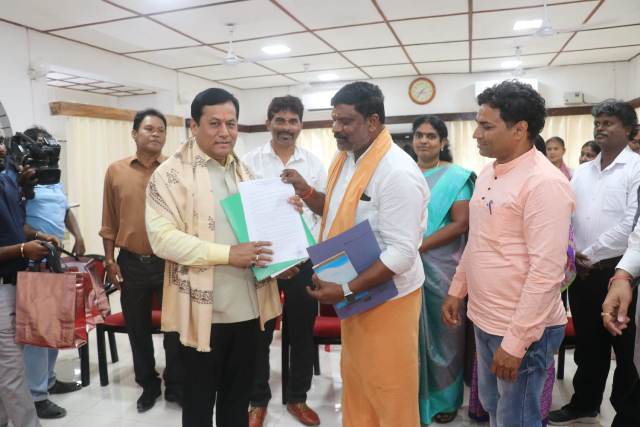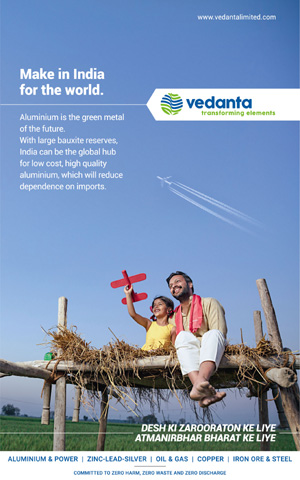Shri Sarbananda Sonowal visited Galathea Bay in Great Nicobar Island and reviewed the progress of proposed International Container Transhipment Port

· ICTP will be a shining example of new India as envisaged by Prime Minister Shri Narendra Modi in Maritime Amritkal Vision 2047
· The DPR of the project is under finalization and the tenders for construction of the project will be invited at the beginning of the next year.
· With an estimated costof about ₹44,000 Crores ICTP will play a crucial for the economic and infrastructural development of the region
· ICTP will be a major landmark in developing India to become a self-assured and self-reliant Nation and will support the economic development of the country as envisaged by our visionary Prime Minister Shri Narendra Modi ji: Shri SarbanandaSonowal, Union Minister, MoPSW
By Pravakar Sahoo
New Delhi, Nov.23 : Shri SarbanandaSonowal, Union Minister, MoPSW on 23 November visited the site of the proposed International Container Transhipment Port (ICTP), at Galathea Bay, Great Nicobar Island and reviewed its progress with the senior officials. As envisaged in the Maritime India vision 2030 as well as one of the key projects in the Amritkaal Vision 2047, the proposed International Container Transhipment Port (ICTP) project has reached significant milestones, solidifying its position as a transformative initiative with a total estimated cost of about ₹44,000 Crores. The project is strategically important for the country and crucial for the economic and infrastructural development of the entire region, has garnered key approvals and support from government bodies.
The Ministry of Environment and Forests & Climate Change (MoEF&CC) granted environmental clearance on November 11, 2022. Additionally, stage 1 forest clearance has been obtained. Also, the Department of Expenditure, Ministry of Finance, has granted “In-Principle” approval for the holistic development of the Great Nicobar Island and the DPR of the ICTP project is under finalization. It is planned to invited the tenders for the construction of the first phase of the project in early next year, after due approvals and concurrences.
The development of this Mega Container Terminal is a part of the holistic development of Great Nicobar Island. The project focuses on three key drivers, which can result in making it a leading container transshipment port, i.e. strategic location in terms of proximity (40 nautical miles) with the International shipping trade route, availability of natural water depth of over 20m and carrying capacity of transshipment cargo from all the Ports in the proximity including Indian Ports.
After his aerial visit of the site,Shri Sonowal also interacted with the local residents and representatives of all the stakeholders at the island and had a detailed review meeting of the proposed methodology of the implementation of the project and its timelines.
After reviewing the project the Union Minister of Ports, Shipping, Waterways and AYUSH, Shri SarbanandaSonowalsaid, “This project will be a major landmark in developing India to become a self-assured and self-reliant Nation and will support the economic development of the country. The Ministry of Ports, Shipping and Waterways is continuously striving to fulfill the grand vision of making a New India as envisaged by our visionary Prime Minister Shri Narendra Modi ji.”
The flagship programSagarmala under MoPSW aims to modernize, mechanize, and enhance capacity of existing ports, making them more efficient and environment friendly. Upgrading & unlocking capacity at major & non-major ports is critical for supporting economic activities in the hinterland since ports serve as a vital link between sea and land transit. In the last 9 years under Port modernization, 94 Projects worth Rs. 31,129 Cr. have been completed, resulting in capacity addition of more than 230 MTPA. In terms of engaging the private sector, 21 projects worth more than Rs. 23,000 Cr. have been successfully operationalizedunder PPP, since 2014, indicating the considerable progress made in leveraging public-private partnerships.
India has a significant potential to set-up mega ports and compete with global ports. There are four key intervention areas highlighted under Maritime India Vision 2030, which include capacity augmentation; developing world-class Mega Ports; development of transshipment hubs in Southern India; and infrastructure modernization. Currently, India has 5 Major Ports and 2 Non-Major Ports with greater than 100 MTPA capacities. With this, there is a significant opportunity for India to set up Mega Ports and compete with global ports. Based on detailed evaluation across key criteria for Mega Ports and emerging growth potential of clusters, 3 Mega Ports – Vadhavan-JNPT Cluster, Paradip Port, and Deendayal Port have been identified to be developed into Mega Ports with >300 M TPA capacity.
The infrastructure initiatives marked in AmritKaal Vision 2047 focus upon development of four port clusters with capacity of >300 MTPA and 2 port clusters with capacity >500 MTPA. In addition to creating port clusters around the existing major ports, 2 new major ports – Vadhavan and Galathea Bay port are envisaged to be developed.
Vadhavan has a natural draft of about 20 meter and is therefore well suited for accommodating larger ships. Development of this port will enable cargo container vessels of 16,000-25,000 TEUs capacity. Similarly, proposedGalathea Bay Port, due to its strategic location in proximity to the East-West world-shipping corridor, is suitable to attract both gateway and transshipped cargo.
Ports in the country would also need to have higher draft available to accommodate larger vessels. Out of five ports from eight namely DPA, Vadhavan, VoCPA, Galathea Bay and PPA to have draft in the range of 18 meters to 23 meters by 2030. Further, 3 ports NMPA, CoPA and JNPA would be drafted in the range of 20 meters to 23 meters by 2047 in order to align with global standards.
Currently, nearly 75% of India’s transshipped cargo is handled at ports outside India. Colombo, Singapore and Klang handle more than 85% of this cargo with 45% of this cargo handled at Colombo Port.The strategic location of Galathea Bay is a huge advantage to EXIM trade as it lies on International shipping route. With the development of ICTP at Galathea Bay, Indian ports will be able to attract more transshipment cargo. Also, developing Galathea Bay Transshipment Port will accrue significant benefits such as forex savings, foreign direct investment, increased economic activity at other Indian Ports, enhanced logistics infrastructure and thus, efficiencies, employment generation, and increased revenue share.
The proposed facility is envisaged to be developed in four phases with Phase 1 is proposed to be commissioned in the year 2028 with handling capacity of ~ 4 Million TEUs, increasing to 16 Million TEUs in the ultimate stage of development by 2058. The estimated cost for Phase 1 of the proposed transshipment port is around INR 19,000+ crores, which includes the construction of breakwaters, dredging, reclamation, berths, storage areas, building and utilities, procurement and installation of equipment, and development of port colony with core infrastructure is going to be developed with the government support.
The Union Minister also visited the Indira Point, the southernmost point of India’s territoryat Great Nicobar Island of Andaman and Nicobar Islands to explore its tourism potential. After the visit, he has directed the concerned officials to explore the possibility of developing the Indira Point area as a tourism destination and develop required tourism amenities and facilities for the same.
During this visit, Shri Sonowal also reviewed the Campbell Bay Port project progress. This project is being constructed with a cost of about Rs.17 crores. It is to be noted that the existing jetty at Campbell bay is inadequate for berthing of larger size vessels. Considering this extension of the jetty for 50m was taken up to facilitate safe berthing of bigger vessels. On completion of the project, vessels of 150mtr long will be able to berth which will provide more passenger and cargo movement between Great Nicobar and other islands. This extension also will facilitate double berthing, which will add for double berthing which will add the port capacity. Considering the future development of Great Nicobar Island, and expected increase in tourists and traders, this jetty will be useful to capture the traffic growth of the island.







